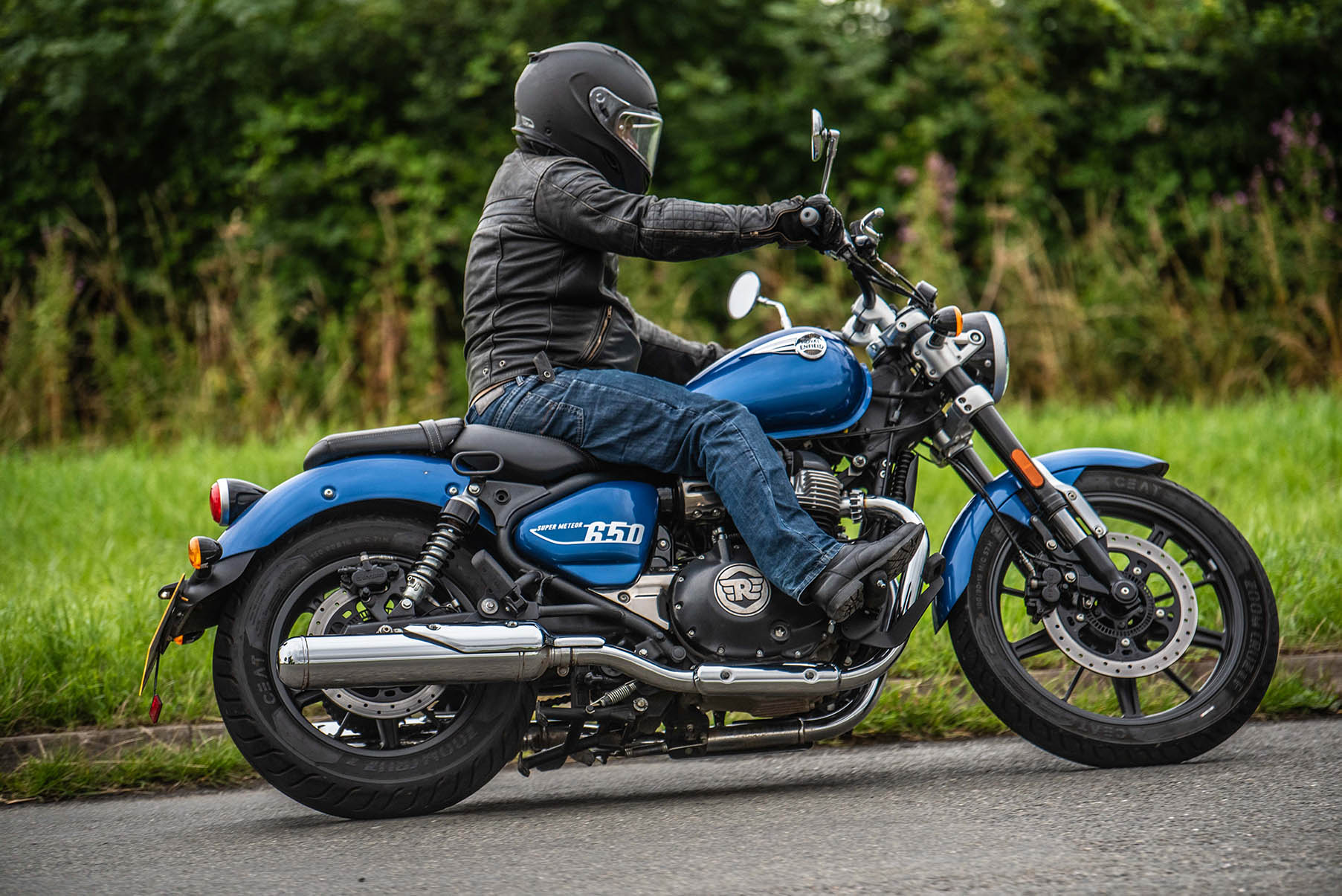Royal Enfield is doing a grand job these days. Previously massive only in the Indian market, but something of a novelty elsewhere, the brand has worked hard to develop a range of products with global appeal. They’ve stayed true to their classic British bike roots with a range of traditional singles and twins, but have somehow managed to capture the imagination of an eager public ready to lap up their traditional and well-priced range of modern day classics.
Keen pricing has played a massive part in the company’s international revival, especially here on the British Isles, but the first impression you get of the Royal Enfield Super Meteor, which is new for 2023, is not one of a cheap motorcycle.
Indeed, my first impression was that this is a big motorcycle. It’s an illusion, of course, because this 650cc parallel-twin is a very manageable bike, but in a world where smaller capacity cruisers can sometimes appear a bit weedy, the buyers of the latest Enfield will definitely feel they are getting a big lump of metal for their £6799.
That’s a good thing, because cruisers should make a statement and the Super Meteor does – at least in a fairly low-key way. The ‘Astral Blue’ colour scheme on our test bike is probably the most understated of the seven colours available to Super Meteor buyers, which includes two-tone options that carry a £200 premium. In addition to the five ‘standard’ colourways, the Celestial Blue and Celestial Red options come as part of a ‘touring’ pack, which features a windscreen up front and a sissy bar at the rear. They cost £7299 and look like great value for those who want to rack up the miles and/or carry a passenger.
It looks quite imposing, with the (largely) blacked out engine, big front wheel and 15.7 litre fuel tank feeling well-proportioned and like a, shall we say, proper motorbike.
Fire up the Super Meteor and it continues, coming to life with the kind of satisfying growl you’d expect from a traditional air-cooled parallel twin. Sure, it’s not as noisy or aggressive as the famous bikes of the 1960s, but Royal Enfield’s engineers have done a great job of engineering sound and character to the Euro5 engine.
Second impressions are also good. Sometimes it’s easy to forget about the touch points on a motorcycle, but the stuff like handlebar grips, levers and footpegs all feel, if not premium, more than you’d expect from a motorcycle wearing a sub-£7k price tag. The grips and foot pegs are nice and, er, rubbery. They’re comfortable, embossed with the Royal Enfield logo, and play a part in creating a largely vibration free experience. It may be a small thing, but I also like the brake and clutch lever design, which feel like they are from a bigger, more premium bike. Insignificant, perhaps, but they all contribute to giving the Super Meteor a big bike feeling and the sense of a motorcycle carrying a bigger price than it does.
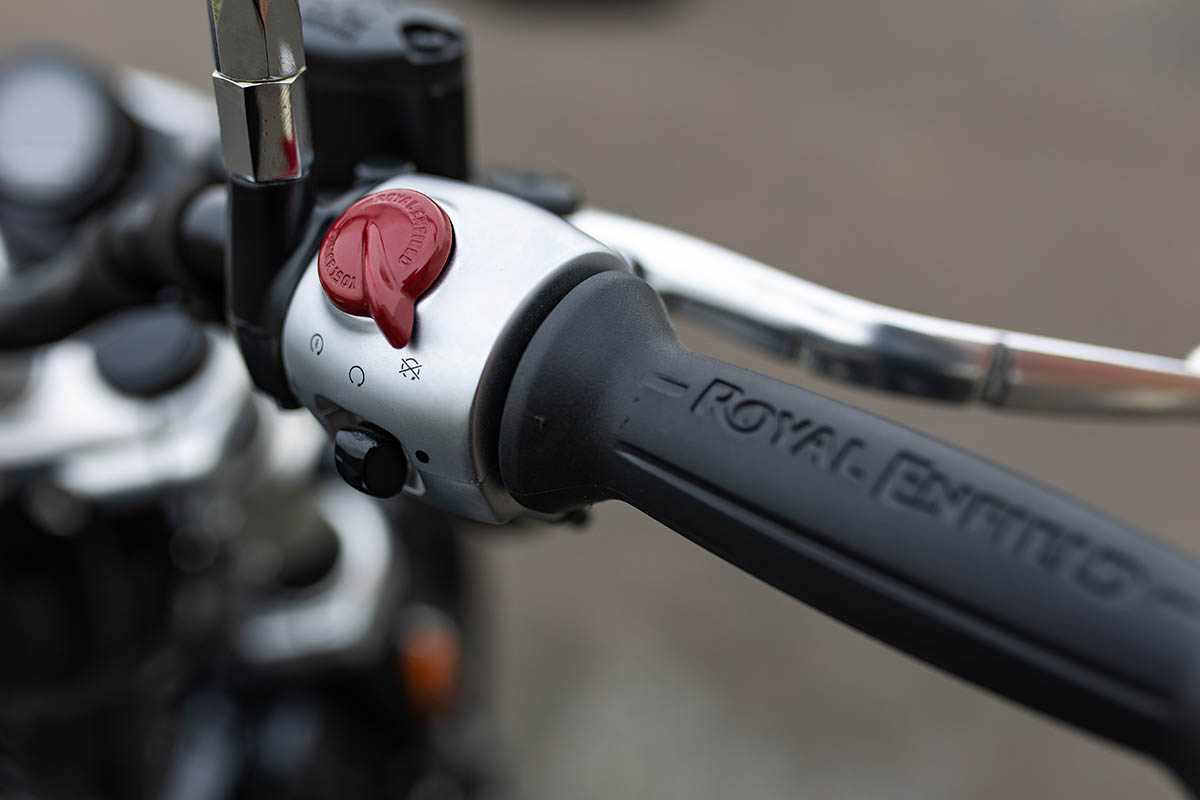
While we’re on with touch points and things we like, the instruments are great with a traditional circular binnacle housing an easy to read analogue speedo, with the packed LCD centre including a gear indicator and fuel gauge, while the right hand bezel facilitates Royal Enfield’s excellent turn-by-turn navigation system, called Tripper. Overall it’s simple, and in fitting with the traditional design. And I just love the uncluttered switchgear. The starter button on the right, in particular, is a work of genius. It looks like an old school kill switch from back in the day, down to the red colouring, but operates the electric starter. It shows to me a brand which really knows and cares about heritage. At this price it would have been easy to simply raid the parts bin and haul out a generic part from another model. Instead, they’ve tooled up some really nice little components which give the feeling of riding something a bit more special. Bravo!
Another area where the engineers have excelled is in the seat. Sit astride the Enfield for the first time and that pointy looking front end of the saddle looks like you’re going to have a rough ride on the Super Meteor. It couldn’t be further from the truth though. This is a feet forward cruiser and sitting back in the saddle, with legs akimbo, the seating position was perfect for me and my stocky 1.65m frame.
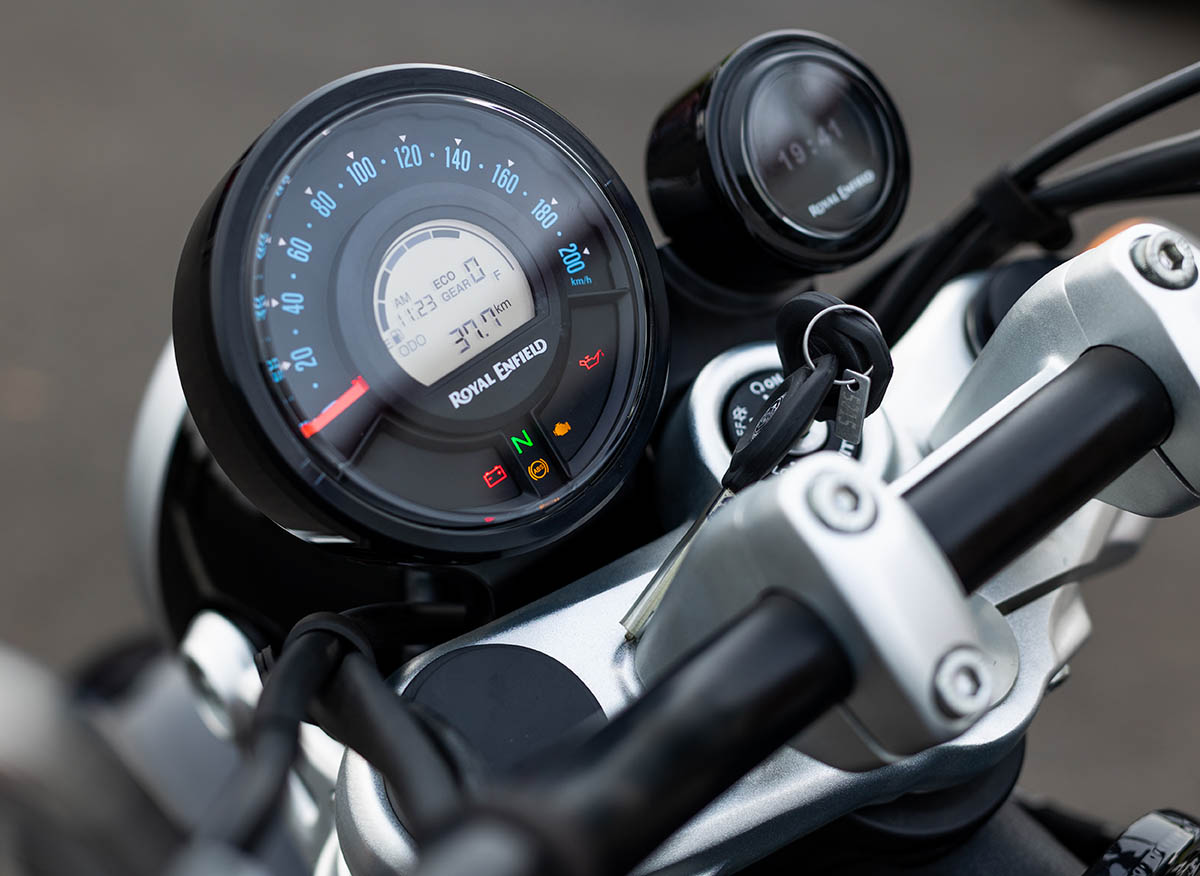
And that traditional cruiser position really gets you in the mood. I’ve never actually loved them enough to own a cruiser, but I’ve tested loads over the years and enjoy riding them. Twist the throttle and there’s no doubt you’re on a ‘proper’ motorbike. It’s a heavy machine, at 241kg partially fuelled, and combined with the long and low chassis it isn’t the most manoeuvrable motorcycle at low speeds, however the low (740mm) seat height does make it nice and manageable. This contrasts with the similarly powered Interceptor, which has a taller seat (805mm) but is much lighter, at 217kg.
On the open road it’s a really relaxing bike to ride. I spent a lot of time riding up and down the A1 on the Super Meteor and, although it’s not exactly a road on which to test a motorcycle’s dynamics, it highlights just how pleasant it is to cruise along between 60 and 70mph. It’ll hustle along well enough on sweeping A and B roads too, but it was actually on the bumpiest backroads where I was most impressed by the Enfield’s poise.
Perhaps it should be no surprise, considering the state of most roads in Royal Enfield’s Indian homeland, but the Super Meteor showed plenty of composure down some of Northamptonshire’s worst paved roads. The Showa suspension isn’t adjustable, but combined with the chunky tyres, comfy saddle and the bike’s general weightiness, it tracked good and true over the bumps and ripples masquerading as minor roads. Handling is reassuring, and ground clearance is far better than you’d expect from a cruiser – although enthusiastic riding can see the footpegs and silencer being decked out.
The chassis itself doesn’t have many technical highlights to shout about, but it doesn’t need them really. Looking back at my notes, I’ve barely written anything about the brakes or the tyres. They do what they need to do, without coming across as particularly weak or strong. On the whole, they’re not high-end chassis components. Brakes, incidentally, come from Brembo’s Bybre sub brand, while tyres are Indian CEATs. The aforementioned Showa forks are upside-down items and look the part. Chrome and paint work impressed me too, especially considering the price, and the tank badge (rather than decal) is another nice touch on what is a budget bike. Wheels are in traditional cruiser sizes: 19” front and 16” rear, with high profile rubber to create that big wheeled look. If I’m being picky, I think the cast wheels look a touch bland and, while the single front disc set up works well enough, I think the addition of a second disc would improve the aesthetic if nothing else.
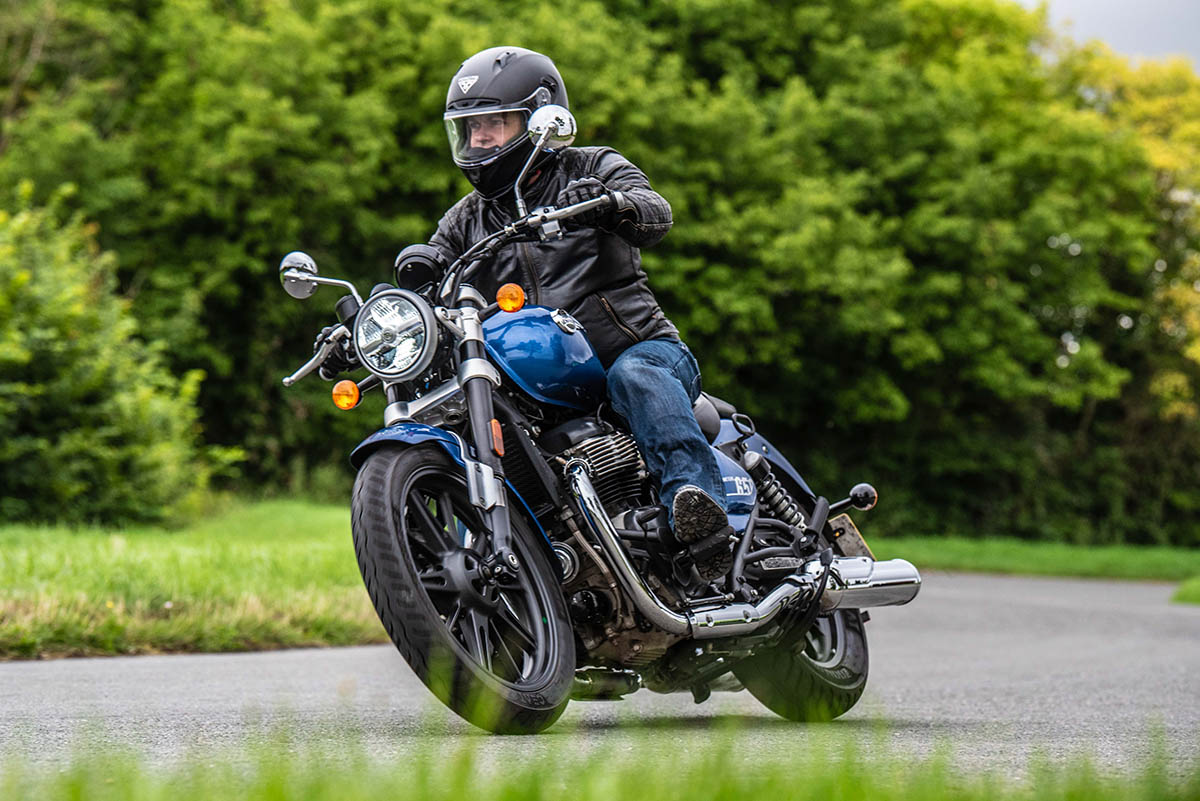
I was a big fan of the Royal Enfield Interceptor when we reviewed it a few years ago, so it’s no surprise I enjoyed my time with the Super Meteor, which shares the same engine. The cruiser’s extra bulk and more laid-back chassis does give it a different vibe. Cruisers are not really fashionable in the British motorcycling landscape these days and while it’s hard to see the Super Meteor being the runaway sales success of the roadster, or even last year’s Meteor 350, it should do well in its own little niche. It compares favourably to the Triumph’s Bonneville Speedmaster, which might offer a lot more spec (and a £13k price tag) but actually the vibe and real-world performance of the Enfield is all you need for a mid-capacity cruiser. In terms of price tag, Kawasaki’s 650cc Vulcan S is probably the Enfield’s closest rival – even though Kawasaki’s custom goes more down the street rod route rather than a traditional cruiser.
Royal Enfield had some success with the Meteor 350, selling well despite its very modest performance. The Super Meteor is quite a big step up in terms of both performance and specification. The 650cc Enfield motor ‘only’ makes 46bhp, but in this kind of bike it’s actually enough for most of the people, most of the time. It also makes it A2 licence compatible out the box, like the Honda CL500 Rebel, and I never really felt lacking. Where the 350 would struggle to hit the speed limit, the Super Meteor will bumble along happily at 70mph, with quite a bit in reserve. If I have one small gripe about the Enfield powertrain, it would be that it was sometimes awkward to select third and fourth in the otherwise adequate six-speed gearbox. I’d probably put this down to the cable operated clutch, which needed a good tug to get it fully engaged.
The Super Meteor is also very customisable, with a range of factory supplied accessories to modify the look and practicality of the bike. There’s a nice little light tourer to be had with the Super Meteor, with the addition of a touring seat, windscreen and some saddlebags.
The Royal Enfield Super Meteor is a very good mid-capacity cruiser. Bikes of this price and capacity can often look weedy, but the Enfield has a real presence and is, without doubt, a proper big bike.
For the British market, Royal Enfield’s own Interceptor 650 is likely to win more fans. It’s a bit cheaper, lighter and is dynamically more engaging with its roadster styling, however the Super Meteor will definitely find an audience with riders looking for a lower seat height, or who just like the feet forward cruiser vibe.
It’s yet another great Royal Enfield twin, developed at the company’s state-of-the-art Leicestershire R&D facility, and delivered at a fantastic price. The Super Meteor may not be a game changing motorcycle, but it does what it’s been designed to do – and does it damned well.
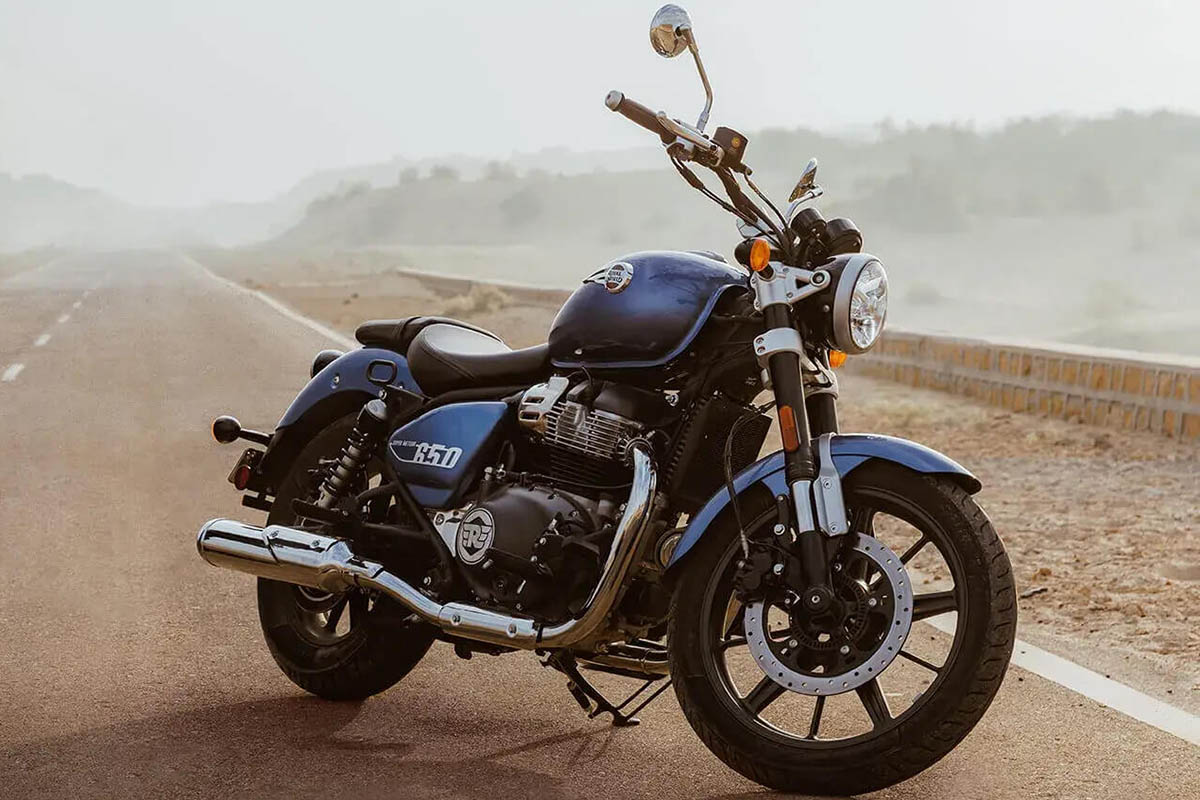
Royal Enfield Super Meteor 650 specification
Price: £6,799 (as tested)
Engine: 648cc, air-coil cooled, SOHC, eight-valves, parallel twin
Power: 34.6kW (46.4bhp) @ 7,250rpm
Torque: 52.3Nm @ 5,650rpm
Frame: Steel tubular spine frame
Wheels: 19” front / 15” rear
Tyres: Tubeless, front 100/90-19M/C (57H), rear 150/80 B16 M/C (71H)
Weight: 241kg wet
Seat height: 740mm
Fuel tank: 15.7 litres
Contact: www.royalenfield.com


